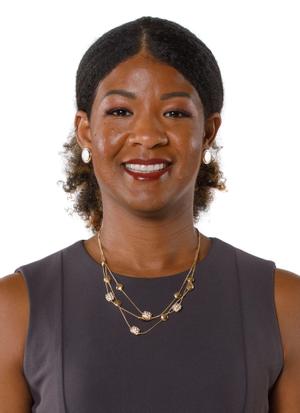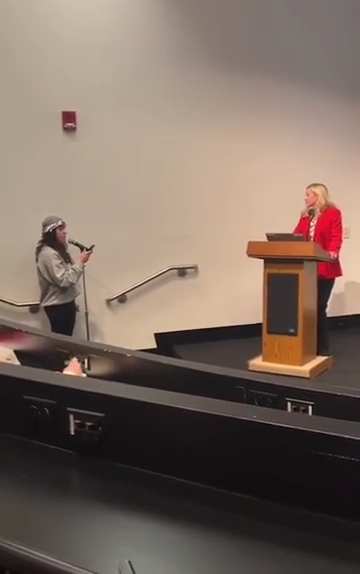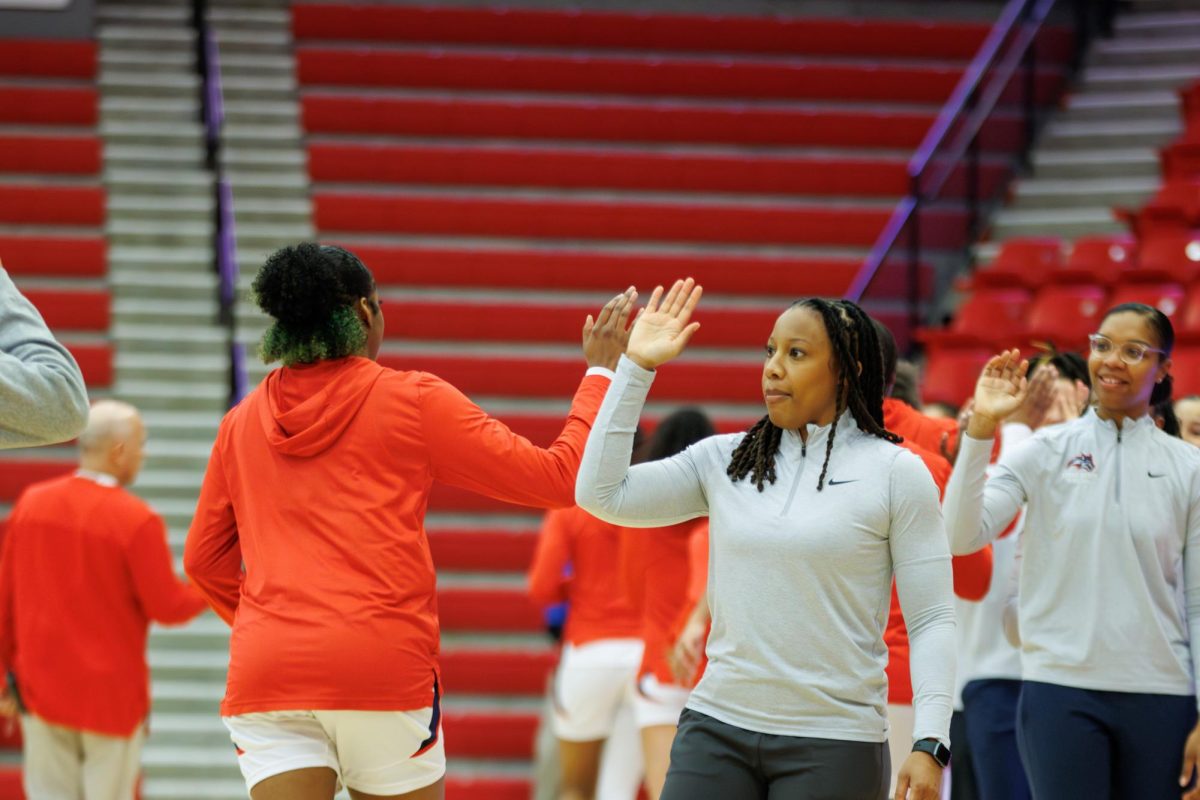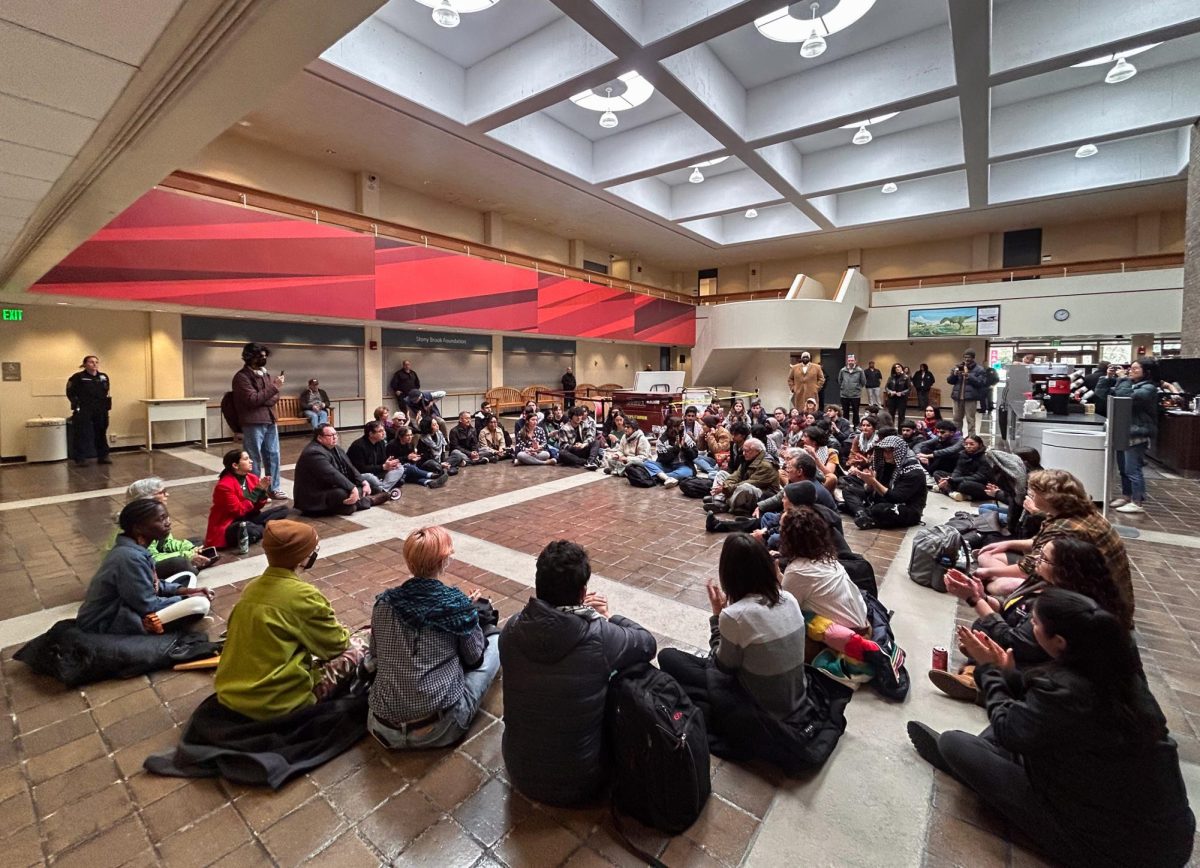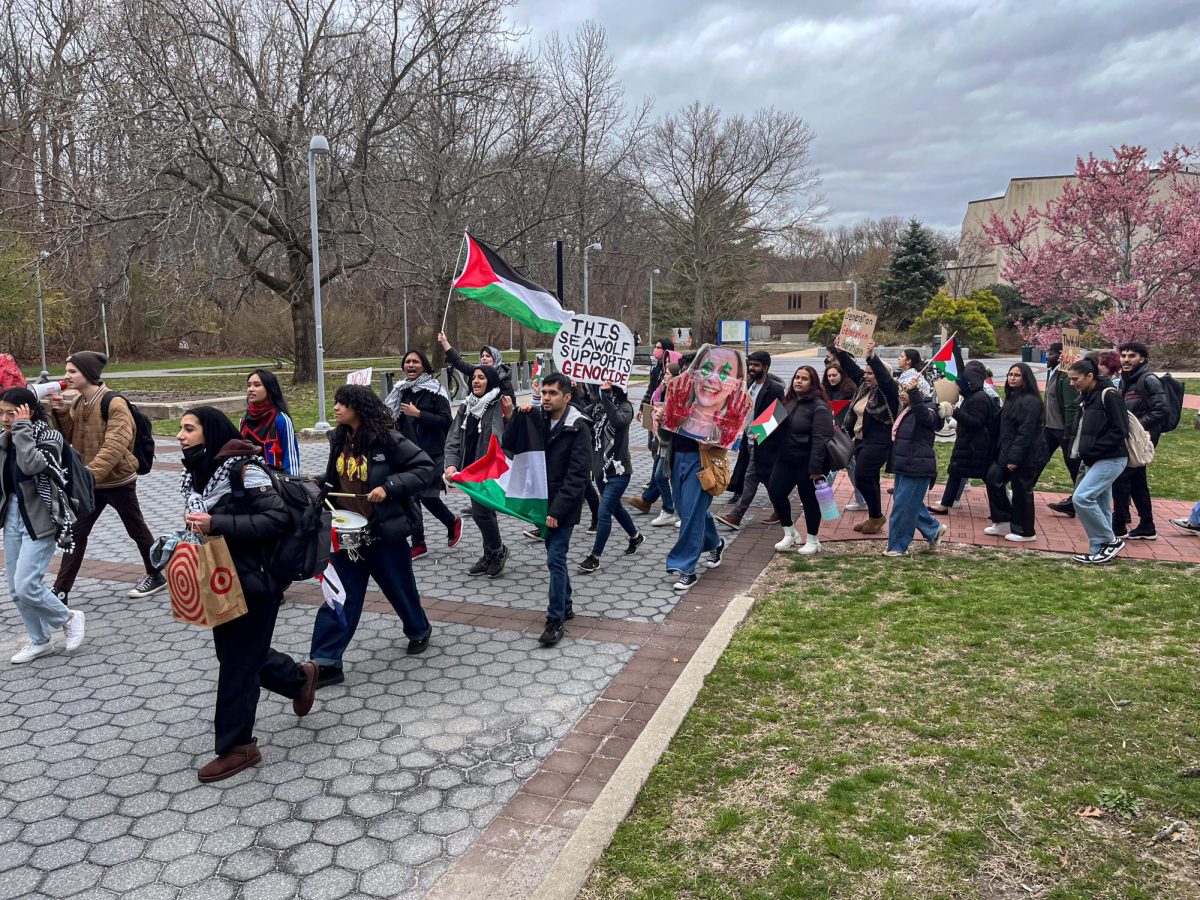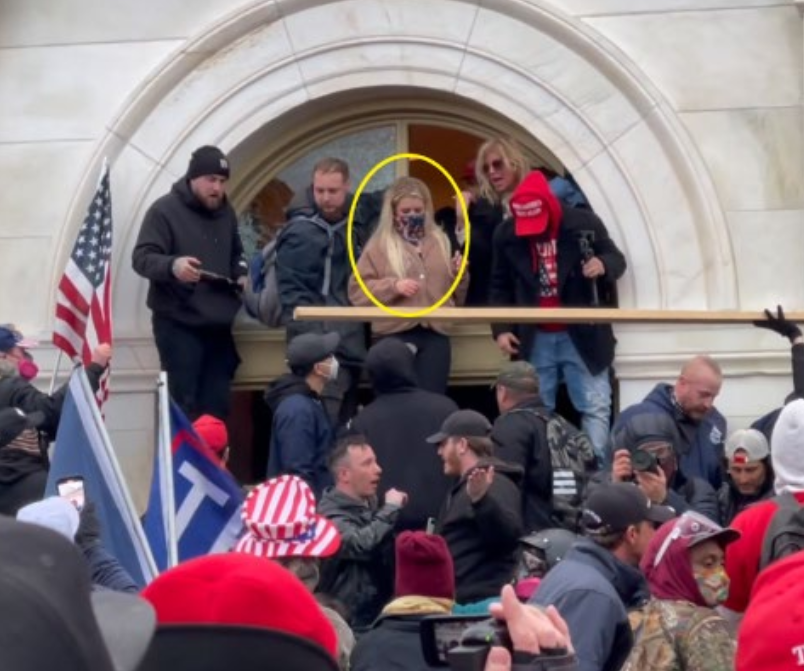
With the Native American Heritage Month kicking off yesterday, Stony Brook’s first program series honoring Native Americans is underway.
The inaugural Native American Heritage Awareness Program Series began on Oct. 20 with a musical performance by Laura Ortman, a White Mountain Apache violinist. It continues through Nov. 16 with speakers, an exhibit, craft events, and a dance performance by Grammy award winner Ty Defoe.
“We’re hoping to not only raise awareness but curiosity because people want to learn, to know that native people are still here – that they are not quote unquote extinct,” Skye Wiegman, vice president of the Native American Student Organization and senior linguistics major, said.
A dream catcher social gave students the opportunity to create their own dream catchers and learn about the traditional American Indian craft intended to trap bad dreams while allowing good ones to pass through. Passersby peeked into the event but could not find a spot in the crowded room, Wiegman said.
An exhibit in the Frank Melville Jr. Library Atrium also took place on Nov. 2, one day after the start of National Native American Heritage Month. It showcased traditional crafts brought in by Jay Levenson, NASO faculty advisor and a Mohawk Indian. Materials and literature provided by the library were also on display along with a crafting demonstration, partnered with a talk on the native peoples of Long Island.
A two-part lecture symposium on Nov. 9 and 16 in the Student Activities Center’s Sidney Gelber Auditorium will feature ten different presentations on Native Americans, ranging from a lecture on reviving the Algonquian language to a talk by Special Trustee for American Indians, Vincent G. Logan called “Building a Native American Professional Class.”
“Hopefully they’ll get to see what Native American culture is like today, not just what they see in the movies,” Levenson said.
Jeremy Dennis, a presenter and Stony Brook alum, spent much of his life on the Shinnecock reservation on Long Island. On Nov. 9 he will present “On This Site,” a photography project that explores archeological, historical and culturally significant Shinnecock locations including a Stony Brook site.
“I have the opportunity to walk in the footsteps of my ancestors and kind of reactivate these different landscapes and just celebrate their lives and my own ancestral culture,” Dennis said.
Dennis hopes the project will spark a dialogue between indigenous and non-indigenous people.
Among the presenters at the symposium is Francisco Delgado, a Seneca Indian and Stony Brook graduate student in the English department, who will be discussing one of his papers, which focuses on the role of death in forming Native American subjectivity. In it, he argues that the constant threat of death and an individual’s Native American identity are co-constitutive.
“Literature, I believe, not only reflects cultural attitudes and values but has the power to change them,” Delgado said.
The symposium will have 11 hours of speakers that include professors, students, artists, and government officials.
“It highlights Native presence on campus and off,” Delgado said. “Too often, Natives are viewed as belonging only to history. This initiative helps counter that thinking.”
Representatives from NASO, Frank Melville Jr. Memorial Library, the Office of Multicultural Affairs, and the Department of Music made up the coordinating committee that planned out the events in the program series. NASO has been established in Stony Brook for about three years, but the group currently has fewer than 15 active members. Wiegman says the lack of man-power and lack of Native Americans on campus contributed to the delay in creating a program like this that honors her culture.
“The Native American population just isn’t one of the larger ones on campus,” Wiegman said. “It’s harder to find people that identify as Native American. It’s not a clear cut, just look at someone and say ‘Oh you must be native.’ ”
There are two Native American reservations within an hour from campus with a population of about 1,000 people, according to a 2010 U.S. Census. Stony Brook University has a total of 35 graduate and undergraduate students that identify as “American Indian or Alaskan Native,” according to the 2016 Fall Headcount Enrollment. In New York as a whole, only one percent of the population identifies as only “American Indian or Alaskan Native,” according to the 2015 U.S. Census.
Funding for the series came in part from contributions by ten university offices and departments including the Office of Multicultural Affairs, the Office of the Dean of Students, and LGBTQ* Services.
The series also received a university grant set forth by President Samuel L. Stanley that is aimed at a continuing push for diversity.
“The Stony Brook University Presidential Mini-Grant for Departmental Diversity Initiative helps bring to fruition ideas which enable the University to adapt to the changing needs of our community,” President Stanley said in an announcement email sent on Oct. 21. “Designed to foster projects, which are the seeds of growth for the University, these mini-grant projects help us improve our research and ability to work together with greater understanding.”
Levenson, who is now a member of the coordinating committee, applied for the grant after a successful outreach exhibit in the library last year. He hopes the series will become an annual event and perhaps one day a degree program. For now, Levenson is happy to have received the funding that made the series possible.
“It means that hopefully people are starting to realize that there is a need out there to learn more about, not only Native American history and culture, but Native American history and culture is actually American history and culture,” Levenson said.










